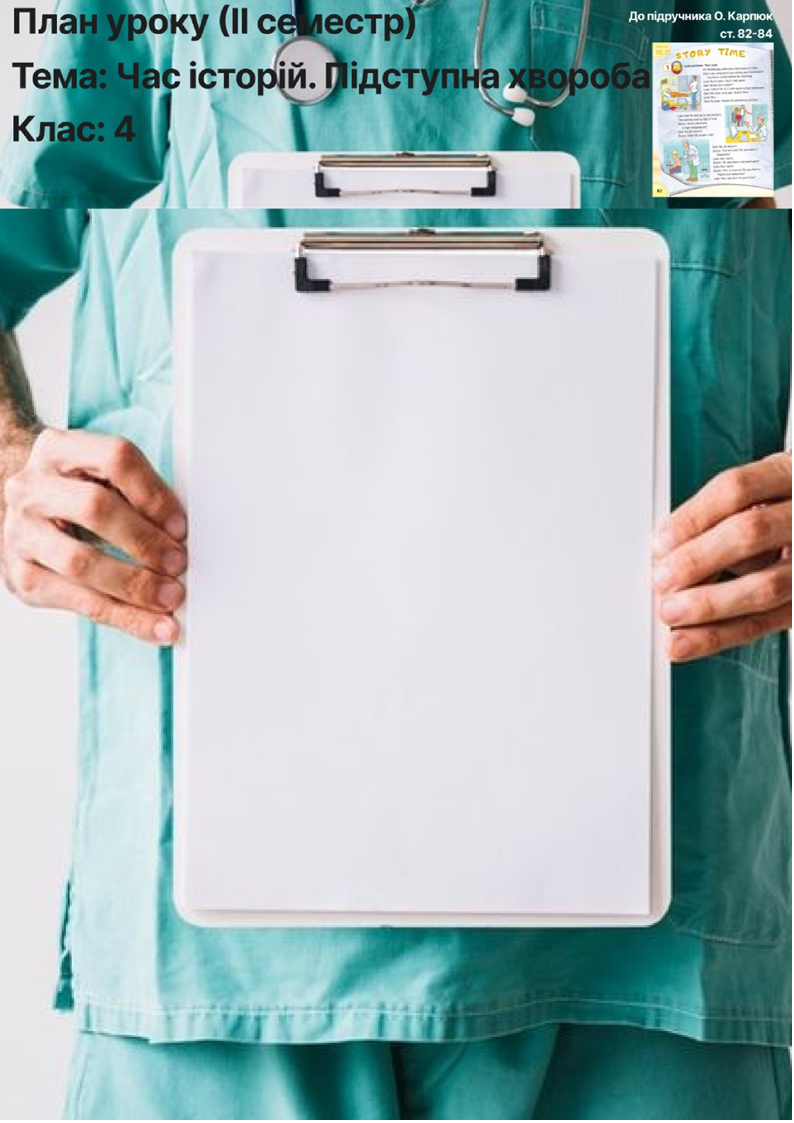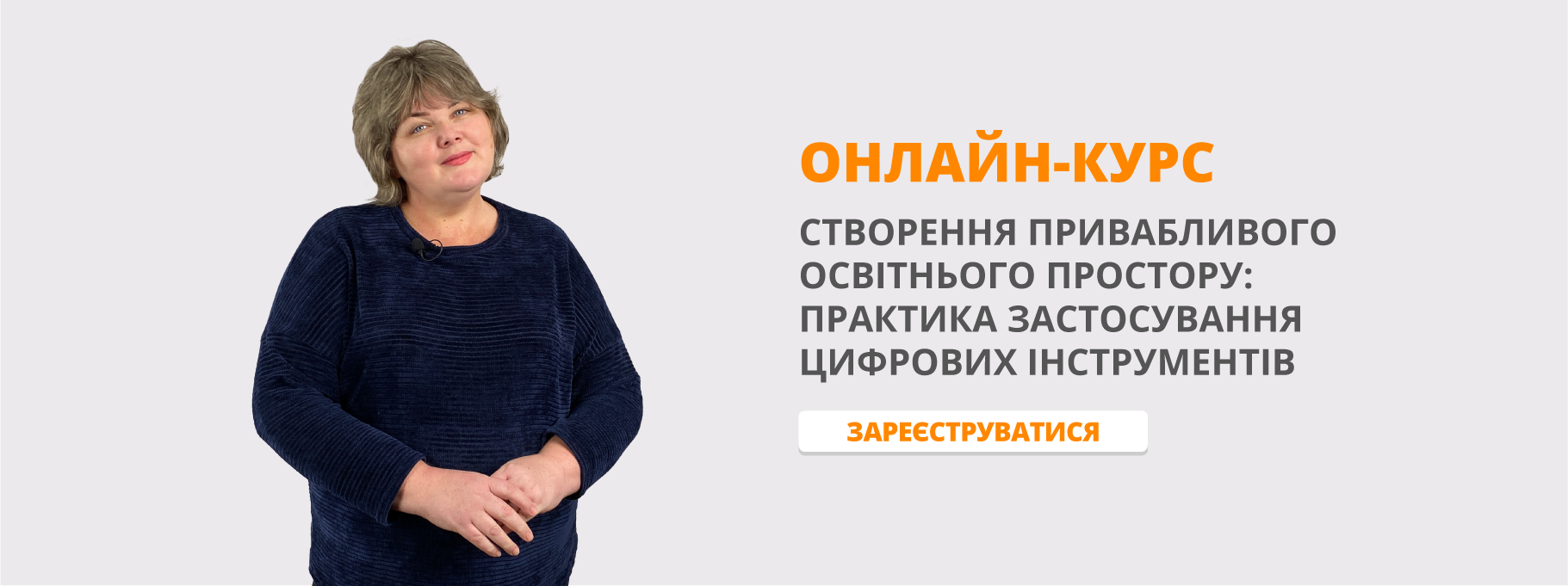План уроку до підручника О. Карпюк: 4 клас, тема: Час історій. Підступна хвороба, ст. 82-84, урок 63 - ІІ семестр
План уроку до підручника О. Карпюк: 4 клас, тема: Час історій. Підступна хвороба, ст. 82-84, урок 63 - ІІ семестр
Objective:
Students will be able to identify the sequence of events in a story and describe the main character's actions and feelings.
Assessment:
 At the end of the lesson, students will complete a sequencing activity where they will arrange a set of pictures depicting the events in the story in the correct order. They will also write a short sentence describing Luka's actions or feelings in each picture.
At the end of the lesson, students will complete a sequencing activity where they will arrange a set of pictures depicting the events in the story in the correct order. They will also write a short sentence describing Luka's actions or feelings in each picture.
Key Points:
• Identifying the sequence of events in a story
• Describing the main character's actions and feelings Opening:
1. Begin by showing the students a
picture of Luka in bed and ask them to describe what they see.
2. Read the sentence, "It's Wednesday afternoon, but Luka is in bed. I don't feel good. We must visit your doctor then."
3. Engage the students in a brief discussion about how Luka is feeling and why he needs to visit the doctor.
Introduction to New Material:
Explain to the students that the story we will be reading is about Luka, who is not feeling well and needs to visit the doctor.
Show the students a set of pictures depicting the different events in the story, such as Luka in bed, going to the doctor's office, and receiving medicine.
Guide the students through the pictures, emphasizing the sequence of events and discussing Luka's actions and feelings in each picture.
Address a common misconception by explicitly stating that the pictures are in a specific order and ask the students to identify the correct sequence.
Guided Practice:
Distribute individual copies of the picture cards to the students.
In a small group or partner setting, have the students work together to arrange the pictures in the correct order.
As the students work, ask guiding questions to scaffold their understanding, such as "What happened first?" and "How do you know?" Independent Practice:
Provide each student with a sequencing worksheet.
Instruct the students to cut out the pictures and glue them in the correct order on the worksheet.
Below each picture, have the students write a short sentence describing Luka's actions or feelings in that part of the story.
Circulate around the room to monitor student performance and provide support as needed.
Closing:
Gather the students together and review the correct sequence of events in the story.
Ask a few students to share their sentences describing Luka's actions or feelings.
Summarize the main points of the lesson and remind the students of the importance of understanding the sequence of events in a story.
Extension Activity:
For students who finish early, provide them with a blank sequencing template and encourage them to create their own story using pictures or drawings. They can then share their story with a classmate or the whole class.
Homework:
For homework, students can draw a picture and write a sentence about another daily activity that Luka could do after visiting the doctor. Encourage creativity and using descriptive language.


про публікацію авторської розробки
Додати розробку
